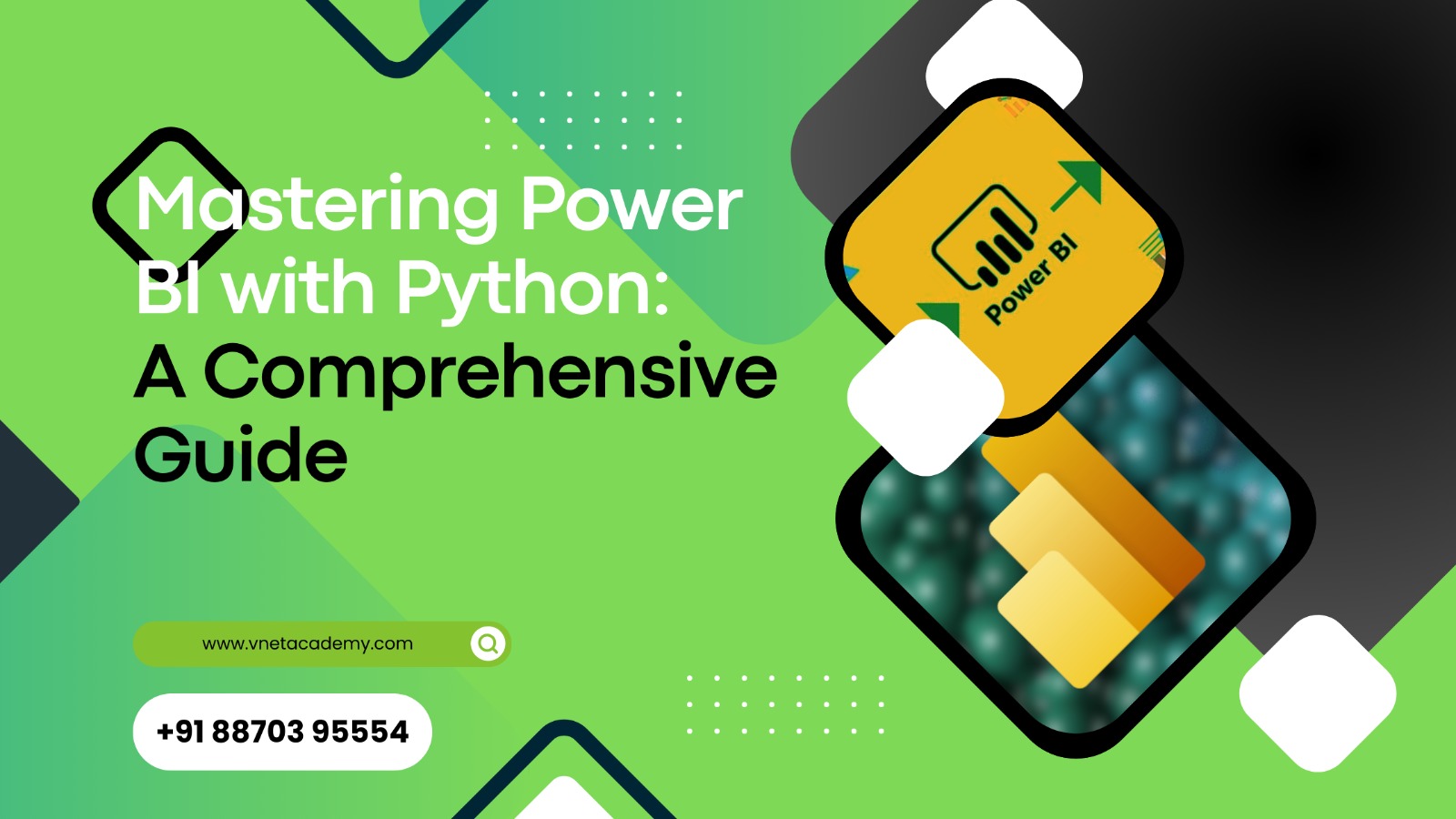In today’s Power BI data-driven world, the ability to harness the power of visualization and analysis is crucial for making informed decisions. Among the plethora of tools available, Power BI stands out as a leading business analytics tool developed by Microsoft. It enables users to craft insightful reports and dashboards, facilitating data exploration, analysis, and sharing. However, the integration of Python into Power BI unlocks a new realm of advanced analytical capabilities and customization options. This comprehensive guide aims to explore the fusion of Power BI with Python, empowering users to enhance their data visualization and analysis prowess.
Table of Contents
ToggleWhat is Power BI?
Power BI emerges as a robust business intelligence tool crafted by Microsoft. Its primary purpose lies in transforming raw data into visually compelling and interactive insights. Through intuitive dashboards and reports, Power BI caters to a diverse user base, ranging from business analysts to data scientists.
Why Combine Power BI with Python?
Although Power BI boasts an extensive array of built-in features, integrating Python augments its capabilities significantly. Python’s versatility in data manipulation, statistical analysis, and machine learning makes it a natural ally to Power BI. By leveraging Python’s rich ecosystem of libraries and tools, users can delve into advanced analytics and craft customized visualizations beyond the native functionalities of Power BI.
Getting Started with Power BI
Before delving into the intricacies of Python integration, it’s imperative to grasp the fundamentals of Power BI and its interface.
Overview of Power BI Interface
The user-friendly interface of Power BI comprises various components such as the ribbon, report view, data model view, and visualization panes. Acquainting oneself with these components lays the groundwork for proficient navigation and utilization of Power BI’s functionalities.
Installing Power BI Desktop
Embarking on the Power BI journey begins with the installation of Power BI Desktop. This desktop application serves as the primary development environment for creating reports and dashboards, laying the foundation for subsequent exploration and analysis.
Understanding Power BI Data Sources
Power BI supports a wide spectrum of data sources, including databases, files, cloud services, and streaming data. Familiarizing oneself with these data sources is pivotal for seamlessly integrating data into Power BI projects.
Integrating Python into Power BI
With a solid grasp of Power BI fundamentals, let’s delve into the integration of Python, which amplifies data analysis and visualization capabilities.
Introduction to Python Integration
Python integration in Power BI empowers users to execute Python scripts within Power BI reports. This integration facilitates advanced data manipulation, statistical analysis, and machine learning directly within the Power BI environment.
Setting Up Python Environment in Power BI
Configuring the Python environment within Power BI Desktop precedes the utilization of Python scripts. This setup ensures compatibility and seamless script execution, paving the way for enhanced analytical capabilities.
Using Python Scripts in Power BI Reports
Once the Python environment is established, users can seamlessly incorporate Python scripts into Power BI reports. These scripts enable custom data transformations, statistical computations, and dynamic visualizations, elevating the depth of analytical insights.
Data Preparation and Cleaning with Python
Effective data preparation serves as the cornerstone for meaningful analysis and visualization. Python offers an extensive toolkit for data cleaning and preparation, seamlessly integrated into Power BI workflows.
Importance of Data Preparation
Data preparation encompasses cleansing, transforming, and structuring raw data to ensure accuracy and relevance. This process enhances the reliability of analytical insights derived from Power BI reports.
Exploratory Data Analysis (EDA) with Python
Exploratory Data Analysis (EDA) involves techniques for gaining initial insights into data. Python libraries such as Pandas and Matplotlib facilitate comprehensive EDA within Power BI, enabling the identification of patterns, trends, and relationships.
Data Cleaning Techniques Using Python Libraries
Python libraries like Pandas and NumPy offer robust tools for data cleaning, including handling missing values and outlier detection. These techniques enhance the quality and integrity of data used in Power BI reports.
Advanced Data Visualization Techniques
Python unlocks a plethora of advanced visualization techniques, extending beyond the standard visuals offered by Power BI.
Creating Custom Functions with Python
Python empowers users to define custom functions tailored to specific analytical requirements. These functions automate tasks and streamline data processing workflows within Power BI reports.
Incorporating External Python Packages
The vast ecosystem of Python packages caters to diverse analytical needs. Integrating these external packages into Power BI expands its capabilities and versatility, fostering innovation and efficiency.
Building Dynamic Reports with Python Scripts
Python scripts facilitate the dynamic generation of report elements based on real-time data inputs or user interactions. This ensures that Power BI reports remain responsive and adaptable to changing requirements.
Sharing Power BI Reports with Python Integration
Power BI facilitates seamless sharing of reports and dashboards across teams and stakeholders, ensuring widespread accessibility and visibility of insights derived from Python-integrated analytics.
Version Control for Python Scripts in Power BI
Implementing version control systems such as Git ensures traceability, reproducibility, and collaboration of Python scripts developed for Power BI projects.
Deployment Options: Cloud vs. On-Premises Integration
Organizations can choose between deploying Power BI reports with Python integration in cloud-based environments or on-premises infrastructure, depending on factors such as data sensitivity and scalability requirements.
Conclusion
For those eager to delve deeper into the fusion of Power BI and Python, VNET Academy stands as an invaluable resource. With expert-led courses tailored to all skill levels, VNET Academy offers comprehensive training on leveraging Python within Power BI environments. From fundamental concepts to advanced techniques, learners gain hands-on experience and practical insights, enabling them to maximize the capabilities of Power BI with Python integration. Explore our courses today and embark on your journey towards mastering Power BI with Python.
